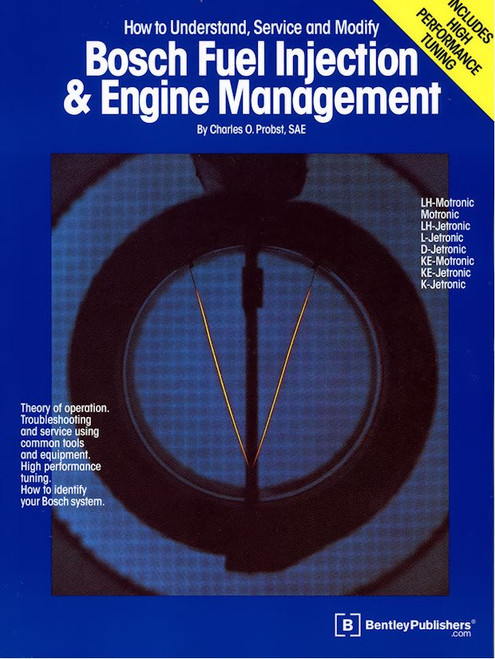This Haynes 10206 service and shop manual, takes the mystery out of Second-Generation On-Board Diagnostic Systems allowing you to understand your vehicle's OBD-II system.
You will also learn what to do when the "Check Engine" light comes on, from reading the code to diagnosing and fixing the problem. This manual also includes a very comprehensive list of computer codes.
Book Excerpt
POWERTRAIN MANAGEMENT BASICSTHE AIR INDUCTION SYSTEM The air induction consists of the air filter housing, the air intake duct, the resonator(s), if equipped, the throttle body and the intake manifold. AIR FILTER HOUSING The air filter housing (see illustration 5.2) contains the air filter element, a pleated paper-type filter that must be replaced at specified intervals. The air filter housing is always located in the engine compartment, usually in a corner where it can be attached to one of the fenders and where it's somewhat isolated from engine heat. Cooler air is denser air and denser air has more oxygen in it. Most modern air filter housings employ some sort of ambient air intake duct that brings air from somewhere outside the engine compartment - a wheel well or a void behind the bumper cover - to the filter housing. The air filter housing assembly is also a convenient location for various information sensors that monitor the mass, volume and/or temperature of the incoming air. Nearly all Mass Air Flow (MAF) sensors and Volume Air Flow (VAF) sensors are located at the air filter housing. And manufacturers often mount Intake Air Temperature (IAT) sensors on the air filter housing as well. AIR INTAKE DUCT The air intake duct (see illustration 5.3) is the black plastic tube that connects the air filter housing to the throttle body. The air intake duct is also a handy place to locate certain types of information sensors, such as the Intake Air Temperature (IAT) sensor or the Mass Air Flow (MAF) sensor. RESONATORS On some modern fuel-injected vehicles, manufacturers are attaching one or more odd-looking boxes to either the air filter housing or the air intake duct, or to both components. These mysterious-looking devices are generally referred to as resonators (see illustrations 5.4a, 5.4b and 5.4c). Resonators perform several functions. First, they act as baffles to muffle engine noises that would otherwise escape though the induction system. Second, they expand the interior volume of the induction system, which means that more intake air is available to prevent air starvation during heavy acceleration. THROTTLE BODY The throttle body (see illustration 5.5a) is an aluminum casting which is always located between the air intake duct and the intake manifold. It houses a throttle plate that opens and closes in response to the position of the accelerator pedal. In conventional setups, the accelerator pedal is connected to the throttle plate by the accelerator cable. The throttle body also serves as the mounting point for various information sensors such as the Throttle Position (TP) sensor and (on some vehicles) the Manifold Absolute Pressure (MAP) sensor, and for output actuators such as the Idle Air Control (IAC) valve.
Why should you ever be in a position whereby you take your auto or truck in a shop and receive a $200 plus bill for a repair that you did not need? You have probably seen many news programs feature people taking their car to a mechanic and getting ripped off. You know the situations where a car/truck owner has the dreaded "Check Engine" light on and then the mechanic simply plugs in a disconnected switch but tells you that they did some major work that isn't true (all caught by the news organization's hidden cameras).
This DIY repair manual will help you dodge the crooked mechanics. You will have the know-how details required to diagnose your vehicle problems so you can either fix them yourself or hire a mechanic to do what you know needs to be done...
Subject: Transportation: Automotive: Cars, trucks OBD-II, electronic engine management systems instruction, 1996-on. ISBN-10: 1563926121 | ISBN-13: 9781563926129 | Haynes 10206- Introduction
- Manufacturer's Warranties
- Tools
- Basic Troubleshooting
- Powertrain Management Basics
- OBD-II Monitors
- Trouble Code Retrieval
- Trouble Codes
- Diagnostic Routines
- Component Replacement Procedures
- OBD-II and Performance Programming










